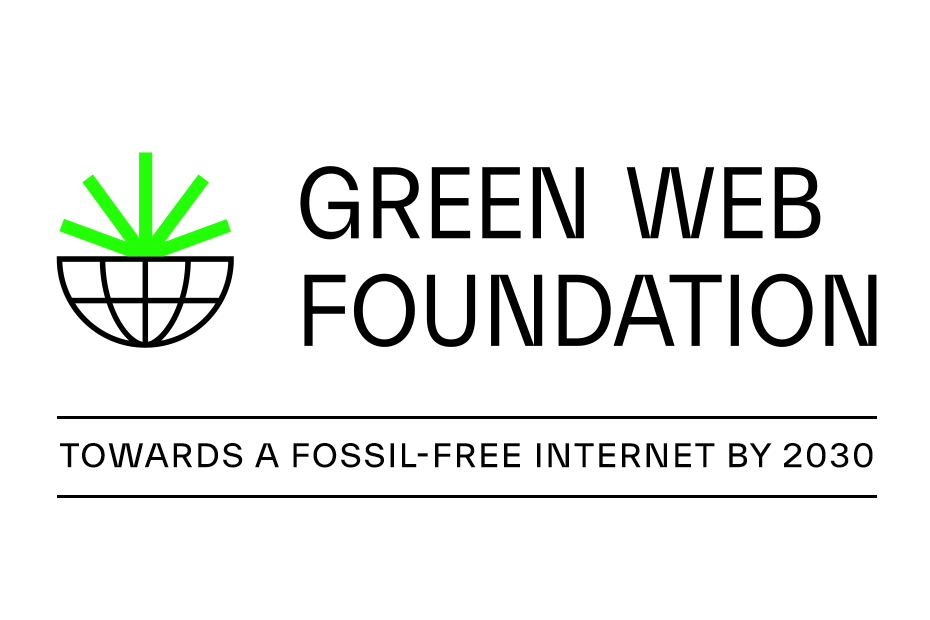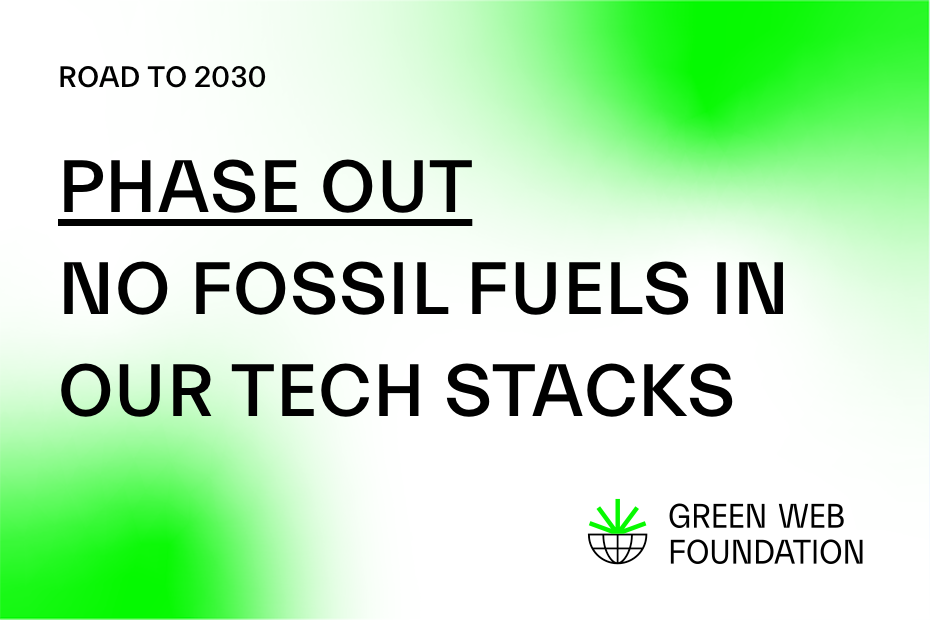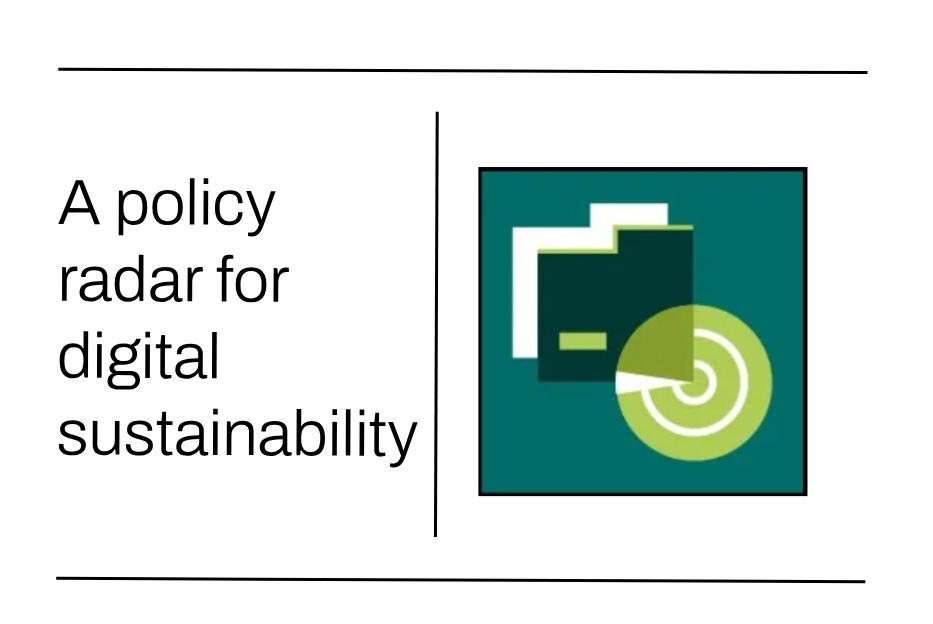The GHG Protocol publish a series of standards that define how organisations should report their carbon emissions, and in doing so they influence the steps organisations take to measure and manage them. Last year the organisation began a multi-year consultation about how it might reform these rules, including their “Scope 2” guidance, which in lay-person terms, describes how electricity might be counted as “green” or “clean”.
This has significant implications for tracking progress towards a fossil free internet, as well as recognising the evidence we ask for in future in our verification process, so we’re sharing an abridged version of our response to the survey, for future reference.
Before we start – a little more context, some helpful links
The GHG Protocol have written about why they are reforming the standards and guidance, on their own website, and this is the first time since 2015 that the organisation has reviewed how they assess the ‘greenness’ of electricity in their Scope 2 accounting.
While they do not share every summary response, they do link to a summary of the submissions for changes to how Scope 2 and Scope 3 carbon accounting could work in the future, as well as providing a breakdown of which types of organisations responded. They also share public links to every single alternative proposal shared. There is also an unlisted 1 hour long video presenting the top line findings of Scope 2 feedback on Youtube by the organisation.
While it’s not necessary to read it to understand this post, the memo that accompanied the survey, along with the full set of questions also provides some further helpful context.
Our answers, abridged
Note: The survey had a lot of questions, and featured some technical language that can be somewhat impenetrable if it’s not part of your day to day work. Also, not every question was required. To make this easier to read, so we’ve focused on sharing the questions we answered, and where necessary, we’ve added a bit of extra context to explain some of the questions.
Off we go:
12. How satisfied are you with the current GHG Protocol Scope 2 Guidance?
Somewhat dissatisfied.
13. Do you think there is a need to update the GHG Protocol Scope 2 Guidance?
Major update (major changes or revisions needed)
14. Please explain your selection. You may enter brief comments here or submit a more detailed proposal using the proposal template.
While we appreciate that the market based accounting approach allows for organisations to dedicate resources to the decarbonisation of the grid that they might not otherwise choose to, or be able to in an cost effective manner, there are a number of significant problems that need to be addressed.
In its current state, the guidance does not reflect the physical reality of the grid very well. Organisations can and do overstate claims about accelerating the decarbonisation of the grids they are drawing electricity from.
While we recognise that having some financial instrument available means there is at least some amount of money going towards renewable energy and similar projects, the amounts that go to these projects are often too small to materially change their economics.
In addition, policy interventions like feed-in tariffs, renewable portfolio standards, and various tax credits by themselves represent drivers of action that are often more consequential for deploying clean energy, without the same recognition.
Finally, to avoid double counting, the way contractual instruments are recognised should be reflected in average grid intensity emissions – something that is currently not recognised.
15. Do you think there is a need for updates related to the Scope 2 location-based method?
Minor update (clarifications or additional guidance needed)
Many openly available location based figures for carbon intensity in their current state are less than ideal, as they are too coarse, and do not reflect how the local carbon intensity of different parts of the grid can change during a 24 hour period.
You can look at Canada and the United States as examples – if you use a country-wide location-based carbon intensity figure, it can hide the significant differences in grid intensity from the underlying sources of generation. The carbon intensity in Quebec in Canada, with significant hydropower resources, will be much lower than the neighbouring province of Alberta, with its extensive operations in the tar sands. The same applies in the United states, when comparing states like Washington State and Wyoming.
Similarly, we know that the location-based carbon intensity can vary significantly based on the time of day – there is little guidance for this, but the GHG protocol could provide or point to conversion factors to use when data is not being disclosed.
17. Do you think there is a need for updates related to the Scope 2 market-based method?
Major update (major changes or revisions needed)
18. Please explain your selection. You may enter brief comments here or submit a more detailed proposal using the proposal template.
The market based system in its current state, and as it is used in practice makes it very difficult to assess how ambitious an organisation is being in its efforts to run on cleaner electricity. It currently incentivises the use of low quality instruments that undermine the stated intention of recognising efforts by organisations to decarbonise their operations.
First among these is the ability to purchase ‘unbundled’ certificates from different times of day or year, and from parts of the energy system where the power would be physically impossible to deliver to where it is being used, and then recombine them with regular electricity to count it as greener energy.
These certificates are typically sold on the market at single digit prices, which is usually too low to make a meaningful difference to whether a project will go ahead. At the same time, the presence of this low cost option means that necessary steps to decarbonise existing supply do not take place – they end up undercutting many more impactful interventions.
An easy example of these prices being so low that they are unconvincing is seeing actions by providers like hosting company GreenGeeks, who buy three times their own usage, to compensate.
In addition, while it is not necessarily the fault of the GHG Protocol, a number of well known providers selectively publish information following the GHG protocol, whilst not following the dual reporting guidelines. Instead, only the market-based adjusted figure is shared, having the effect of ‘zero-ing’ out any stated carbon emissions, and concealing energy usage figures. This would otherwise be important for understanding the environmental impact an organisation’s operations have on the surrounding area or climate.
Qn. 19. Do you think there is a need for updates related to the dual reporting requirement, i.e., to report Scope 2 emissions using both the location-based method and market-based method?
Minor update (clarifications or additional guidance needed)
20. Please explain your selection. You may enter brief comments here or submit a more detailed proposal using the proposal template.
The dual reporting requirement is necessary, but in practice a number of large providers claim to follow the GHG protocol reporting standards, whilst only publishing market based figures.
Two examples of this practice are Apple and Amazon – for the last two years, while both have made claims around running on green energy, neither have followed the dual reporting requirements to show location based and market based accounting. Having such high profile organisations making claims to follow the standard, while selectively following the guidelines like this, undermines the scheme.
24. Chapter 11 of the Scope 2 Guidance, titled “How Companies Can drive Electricity Supply Changes with the market-based method”, elaborates how organizations can use their procurement power to substantively contribute to new low-carbon energy supply. In this context, does your organization pursue any of the options suggested in Chapter 11 and/or otherwise empirically evaluate the connection between changes in GHG emissions to the atmosphere and your organization’s scope 2 related decarbonization investments?
Not sure.
25. If so, how?
We currently screen our own suppliers, and we favour organisations that can make credible claims for using energy from sources where the carbon intensity is low enough to count as ‘green’ directly, or where they can demonstrate using the market based approaches to match or exceed their usage with generation from low carbon sources.
However, we know that in many cases, organisations are not entering renewable energy power purchase agreements for climate reasons – they are doing so to reduce their costs, and there is often already significant support in the form of subsidies to incentivise them.
26. Has your organization identified any instances where application of the current Scope 2 Guidance has led to changes in your reported GHG inventory (i.e., an increase or decrease in reported emissions) while potentially leading to an unequal or opposite outcome in total GHG emissions to the atmosphere?
Yes
27. If so, please explain.
We purchase energy from ‘green’ plans, both for our direct use, but in many cases, we know that the energy we are purchasing is not only coming from renewable sources. While it is presented as zero carbon, we know this is not the case.
On a volumetric basis, we might have guarantees that, for example, 50 megawatt hours of usage was met with 50 megawatt hours of certificates.
However, the time and location of the generation matters – if the certificates come from projects that are generating power at different times to when we used it, then there is no guarantee that the carbon intensity of the power consumed and attributed to us is as low as the market based instruments applied would suggest.
28. New grid-connected technologies and/or their increased deployment may require further clarification or changes to the Scope 2 Guidance to better address accounting of emissions associated with these resources. Please select from the potential options below any technologies which would benefit from updates or additional guidance. Please also include any additional technologies outside of this list which should be considered. Any specific suggestions related to these technologies should be submitted in the Scope 2 proposal section.
d. Energy storage technology
f. More geographically granular electric grid emission data (e.g., emissions associated with electricity at specific locations)
g. More time-granular electric grid emission data (e.g., monthly, hourly, etc. emission factors in addition to annual values)
29. Are there existing resources, tools, or databases developed by other organizations that you would suggest that GHG Protocol consider to support organizations in applying the Scope 2 Guidance?
Openly licensed datasets like those produced by Ember climate, or the UNFCCC – these would drastically lower the barrier to entry, and help organizations develop some carbon literacy when it comes to understanding decarbonising the grid.
More detailed figures for location based emission reporting – i.e. conversion factors for time of day in a given location would be helpful along with higher geographic and temporal resolution.
Openly licensed, higher resolution residual emissions data – having this would reduce double counting – as large PPAs become more widespread, the impact they have on distorting average carbon emissions will grow.
30. Are there new resources, tools, or databases that you think need to be developed to support organizations in applying the Scope 2 Guidance?
Emerging standards like Energy Tag – broadly speaking, the Energy Tag standard for tracking the hourly carbon intensity of electricity is a real leap forward – both in transparency, but also in terms of being able to support much finer grained claims related to the decarbonisation of electricity.
These should be represented high in the hierarchy used for recognising grid decarbonisation.
32. GHG inventory reporting can overlap and/or interact with regulatory policy mandates, state and federal subsidies, emission reporting or target-setting programs, etc. (e.g., see Scope 2 Guidance, Chapter 8.2. Reporting on the relationship between voluntary purchases and regulatory policies). Are there clarifications or changes in the Scope 2 Guidance that would simplify and harmonize complying with the Scope 2 Guidance and better align with regulatory policy mandates, programs, etc.? If so, please identify such interactions and share any potential solutions.
Provide unambiguous, rigorous criteria to meet for an organisation to make credible claims thattheir energy use has been matched with clean generation. This needs to be expressed in terms of delivery over the grid, the time of use, and additionality (the likelihood of making residual grid emissions worse).



